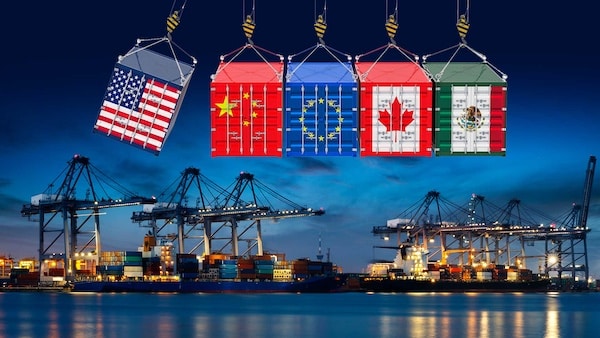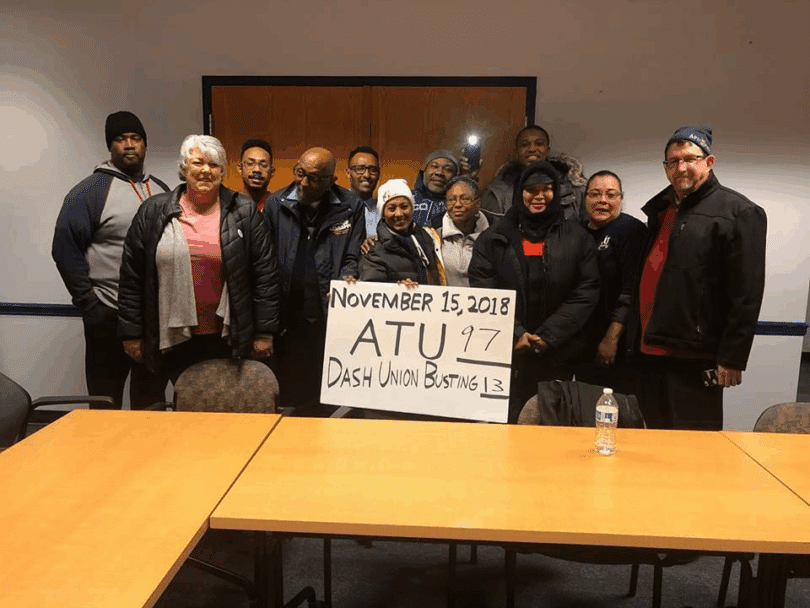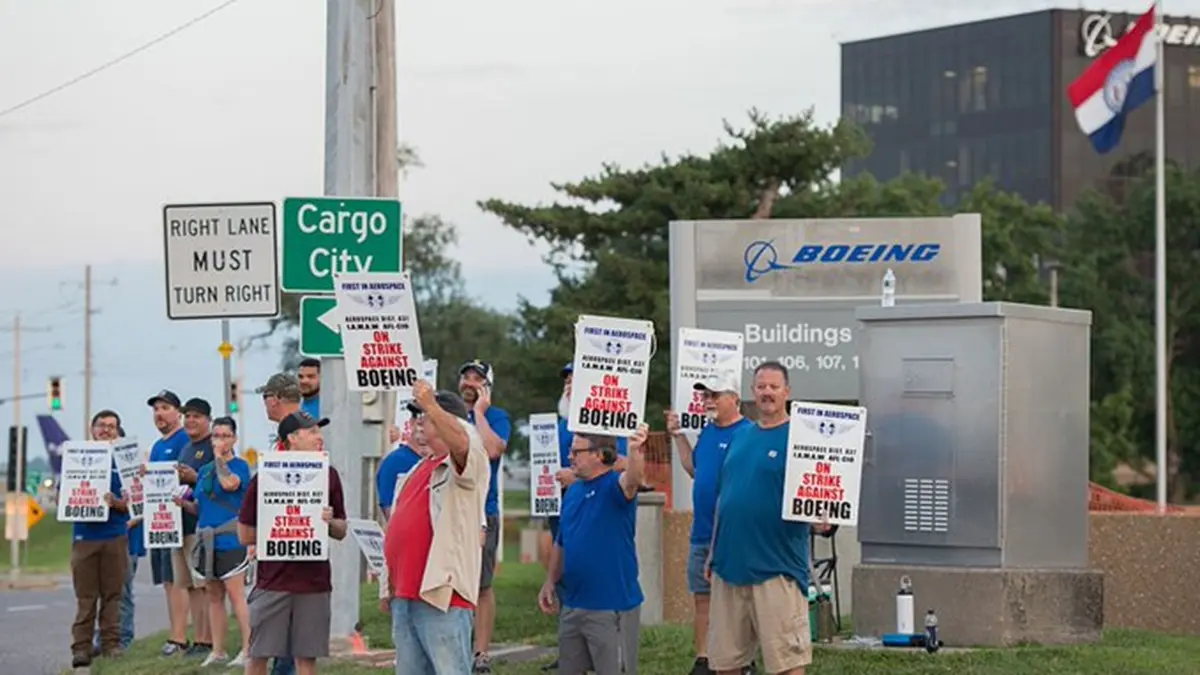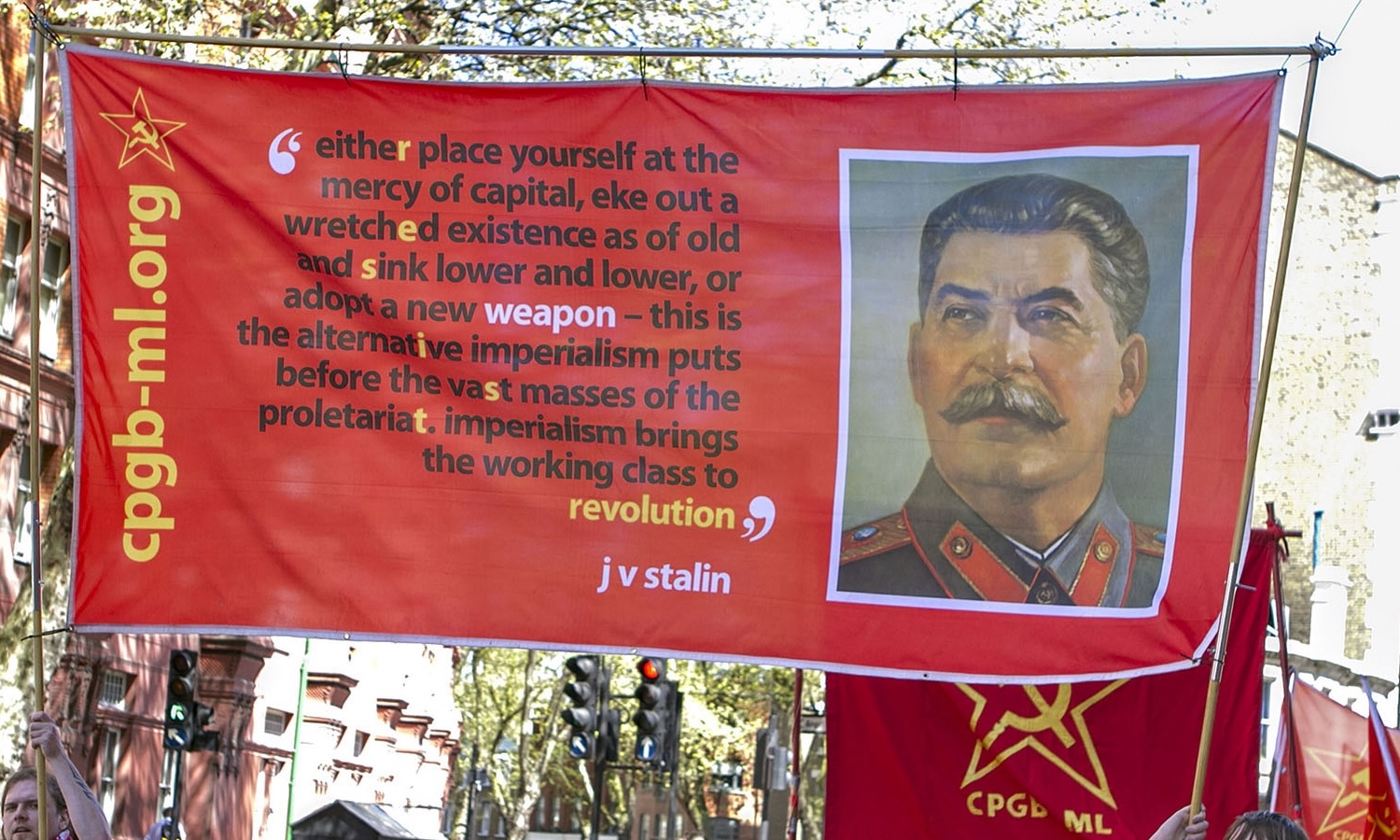How the ICE Raids and Crackdowns on Anti-Genocide Speech Are A Threat to All American Workers
Posted on June 11, 2025 by Conor Gallagher
David Huerta, president of SEIU California and SEIU-United Service Workers West, was injured and then arrested while documenting a raid by Immigration and Customs Enforcement (ICE) agents on Friday. He is now facing a felony charge of conspiracy to impede an officer with the the Los Angeles native’s detention the latest example of how organized labor is being hit hard from the raids by masked ICE agents.
Not only is the Trump administration not going after the employers of undocumented labor, but it is instead targeting union members who were legally living and working in the US. Team Trump is doing so by cancelling humanitarian parole, revoking the visas of many graduate student union members, and other ICE actions that target individuals in the wrong place at the wrong time with the wrong skin color and potentially the wrong outlook on capital-labor relations.
Unions are increasingly sounding the alarm that the ICE agents snatching people off the street is part of the administration’s wider crackdown on organized labor.
The AFL-CIO’s Department of People Who Work for a Living (DPWL) recently held a series of hearings across the country to provide a platform for working people and local communities to express their views on the current administration’s policies. Summarized in this report, they argue that the Trump administration’s mass deportation program, with its disregard for due process, threatens the constitutional rights of every worker and poses serious disruptions in key industries and local economies. Let’s take a look at what they’re saying and how this is playing out.
Far from focusing immigration enforcement efforts on people who pose a public safety risk, Trump has taken active steps to strip status and work authorization away from millions of working people,many of whom have been members of our workforce and our unions for decades. These enormous populations have all had their status terminated and are now fighting in the courts to preserve their ability to live and work here:
Nearly 1 million workers with Temporary Protected Status due to unsafe conditions in Afghanistan, Cameroon, Haiti and Venezuela.
More than 1.5 million workers with Humanitarian Parole (an unfortunately named form of protection that has nothing to do with the criminal justice system) who were invited here with sponsors from Afghanistan, Cuba, Haiti, Nicaragua and Venezuela.
Note that all these countries have in recent years—and in some cases, dating back much further—been on the receiving end of US invasions, “counterterrorism” operations, sanctions, regime change efforts, and other modes of violence and plunder. In return, some lucky few get to live the American dream working long hours for low pay and have had the temerity to try to better their lot by joining unions here in the US. Their reward?
Like our federal workforce, hundreds of thousands of these immigrant workers received notice through harshly worded form letters that their status, and therefore their ability to work, was being terminated. Some were given as few as seven days to pack up and leave the country, and told that failure to do so would result in criminal prosecution.64 These callous terminations are effectively resulting in mass layoffs of workers across the country, causing massive disruptions in key industries, local economies and union membership.
Larger Plan at Work
While militarized ICE agents sweeping into communities across the country might appease some of Trump’s MAGA supporters and provide the illusion of doing something about the exploitation of foreign workers, a closer look shows that it is part of a coordinated attack on all of labor.
How so? Let’s start with Donald himself and go from there.
Trump’s businesses rely on and continue to seek H-2B non-agricultural “guest” workers. A crucial difference between the H-2B and H-2A—covering agricultural workers—and individuals who worked in the US under temporary protected status or humanitarian parole is that the latter two categories didn’t have their ability to stay in the country legally tied to their work.
That made them less exploitable. They were free to change jobs and unionize.
Guest workers, on the other hand, are loved by Trump and many employers because they are basically indentured servants. Even the Departments of Labor and Homeland Security “acknowledge that H-2B workers face structural disincentives to reporting or leaving abusive conditions, and often lack power to exercise their rights in the face of exploitative employment situations.”
H2-A guest workers also faced a major setback in their fight to organize last year when a District Court Judge issued an injunction in August that blocked them from unionizing in 17 states. Meanwhile, the guest worker program features labor trafficking, and rampant wage fraud, illegal recruitment fees, wage theft, and illegal threats of retaliation. Abuse is made easy by the fact that it’s almost impossible for workers to quit their jobs since their visas are tied to a single employer. Mike Rios, a DOL regional agricultural enforcement coordinator, describes the H2 program as the “literal purchase of humans.”
As of 2024 there were 384,900 H2-A and 215,217 H2-B workers in the US. About 40 percent of U.S. farmworkers are undocumented, and as of 2020 there were more than 406,000 individuals with Temporary Protected Status, which allows them to reside and work legally in the US due to unsafe conditions in their home country. The similar humanitarian parole covered another 530,000-plus.
Trump is trying to end Temporary Protected Status, and on May 30 the Supreme Court allowed the administration to pause humanitarian parole. Notably, Trump and his ICE goons are not going after H2 workers, but they are targeting those who try to organize them.
In March, ICE agents smashed his car window and detained Alfredo “Lelo” Juarez, who began working as a berry picker at the age 14 and helped found Familias Unidas Por La Justicia, an independent farmworker union in Washington State. He advocated around issues like overtime pay, heat protections for farmworkers and criticized the exploitative nature of the H-2A program. A Seattle immigration judge had ordered Juarez Zeferino’s removal in 2018.
Edgar Franks, the political director of Familias Unidas, tells Truthout that the view from the ground makes the Trump administration’s aims fairly obvious. It’s not about ridding the country of immigrant workers nor even prioritizing the white working class. It’s about making all of labor more easily exploitable:
It was meant to silence the organizing, deport as many people as possible, and to bring in a captive workforce through the H-2A program. We think that might be the ultimate plan: to get rid of all the immigrant workers who are organizing and fighting back for better conditions, and to bring in a workforce that’s under the complete control of their employer with basically no rights. It’ll make it even harder to organize with farmworkers if more H-2A workers come. It wouldn’t be impossible, but it’ll be more difficult.
A White House official told NBC News that Trump wants to “improve” the H-2A and H-2B programs, although it’s unclear what exactly that means. If his first term is any indication, it means “improve” for the employers. During Trump 1.0 the temporary work visa programs steadily grew a total of 13 percent larger, and he used the Covid emergency to help make it happen:
During the pandemic, his administration issued a series of emergency measures that made H-2A and H-2B visas more flexible and employer-friendly. Workers were allowed to stay in the country for longer periods of time, in part because they had been deemed “essential workers,” and wages for H-2A workers were effectively frozen.
With more emergencies arriving on multiple fronts, it wouldn’t be surprising to see a replay. Should the Trump administration succeed in replacing temporary protected status, humanitarian parole, and others with guest workers, it would make it that much harder to organize. As Noah Zatz, a law professor at UCLA notes:
…work under threat of incarceration outside of criminal punishment, or racialized state violence outside incarceration—also highlight continuity with immigration detention and deportation. This continuity is particularly important because labor advocates and the labor movement have come to understand—through a long and still-contested process—how employers gain power to intimidate, retaliate against, and divide workers when the state’s deportation threat hangs over them and can be invoked by employers.
Labor Needs Due Process and Free Speech
The AFL-CIO also notes how the disregard for due process and crackdowns on speech hurt immigrant workers now and will do doubt be turned on all workers down the line:
In another alarming development, immigrant workers, including green card holders and work visa holders, have faced arrest, detention, revocation of status and deportation with a complete lack of due process. These attacks are affecting more and more of our union siblings, including:
SMART Brother Kilmar Abrego Garcia, who was deported to a Salvadoran mega-prison in what the Department of Justice has admitted was a mistake. The administration is refusing to comply with a unanimous Supreme Court order to facilitate his return.
Former UAW Brother Mahmoud Khalil, a green card holder with a pregnant U.S. citizen wife, who is being detained without charge and told his green card will be revoked for criticizing U.S. foreign policy.
SEIU Sister Rümeysa Öztürk, a grad student worker, was being detained, and was just recently released, for the offense of writing an op-ed in the Tufts University Law School Journal.
Hundreds of other higher education student workers around the country from a wide range of unions have had their visas revoked for reasons ranging from the exercise of free speech to being from countries now being considered for new travel bans. The quickly escalating efforts to deny due process, define what constitutes acceptable speech, and arbitrarily strip workers of their visas and work permits creates a climate of fear and sets a dangerous precedent for the rights of all working people, whether they are citizens or not.
Despite all the masked ICE agents ripping people out of Home Depots and actions and “ICE Barbie” parachuting in for photo ops, the administration has yet to go after employers of illegals, which is the easiest and most effective way to stop their hiring—but that’s not the goal here. Here’s the AFL-CIO with a fine example:
As an indication of what this imbalance in spending and priorities looks like in practice, ICE reported that it conducted a recent raid at a Philadelphia car wash because it had reports that workers were being exploited. The consequence, however, fell to the seven immigrant workers who were arrested, rather than the employer who was violating their rights. In a country where we rely on workers to report violations to enforce our labor laws, inappropriate enforcement responses such as this risk chilling the exercise of workplace rights, making all workplaces less safe and undermining our organizing efforts. Moreover, these misplaced worksite enforcement priorities incentivize predatory employer behavior that will fuel a race to the bottom in wages and working conditions in major industries around the country.
At the same time, the Trump administration is gutting the Department of Labor that was already woefully understaffed (750 investigators overseeing fair labor standards at 11 million workplaces) and unserious about penalties anyways (maximum penalty per child laborer is $15,000). It has been a bipartisan effort to continually torch it with Trump now acting as an accelerant.
As the administration continues to dismantle the federal agencies charged with enforcing our labor and employment laws, the investment in immigration enforcement continues to increase. Our nation already spends 14 times more on immigration enforcement than it does to enforce all the laws to protect more than 165 million workers in job sites around the country. Gutting our government’s resources and capacity to enforce labor standards and protections while stripping immigrant workers of rights and ramping up immigration enforcement is a core part of the anti-union, anti-worker playbook that will enable employers to violate worker rights with impunity. This is a toxic formula that will drive down standards for all workers in key industries and increase wage theft, child labor violations, and preventable workplace injuries and fatalities.
Indeed, that appears to be the plan. With Trump and DOGE’s gutting of the National Labor Relations Board, attacks on federal workers unions, selective deportations, Gold Cards, and promotion of H-2 workers, the goal is to make all workers more like the undocumented ones. Here’s Michael Macher:
…the US immigration system runs not on the enforcement of immigration laws, but on their selective nonenforcement. Employers have relied on the state to ignore the exploitation of undocumented labor while holding the credible threat of deportation over workers. This has had the effect of strengthening employer bargaining power generally against all workers—lowering wages, weakening unions, and shifting the politics of work away from collective bargaining and wage-and-hour regulation. The interest in labor that is weak and disorganized has driven US politicians, consciously or not, to adopt the role of petty bosses, threatening the deportation of significant portions of the US workforce. But if Trump can afford to blow up this arrangement, it is because the precarity of the undocumented worker represents the future of labor relations in the US, not its past.
https://www.nakedcapitalism.com/2025/06 ... rkers.html
******

Crystal Londonio, wife of detained Machinist Max Lodonio, speaks at the June 6 rally. Richard Howard, the president of her husband’s Machinists local is at right (in hat) with another local member. (Photo: Zack Pattin)
‘IAM Max’: Machinists rally for member detained by ICE
Originally published: Labor Notes on June 9, 2025 by Zack Pattin (more by Labor Notes) | (Posted Jun 11, 2025)
Rallying under the banner “IAM Max,” 200 union members and supporters gathered outside the Northwest Detention Center (NWDC) in Tacoma, Washington, on June 6 to demand the release of Maximo Londonio, a member of Machinists (IAM) Local Lodge 695 who has been imprisoned by ICE since mid-May.
“He should not be here, he should be at home with his wife and family,” said Machinists International President Brian Bryant at the rally.
We want everyone that’s illegally in this facility set free.
Londonio, known as “Kuya” (meaning “big brother”) to his family and co-workers, is the lead forklift driver at Crown Cork and Seal, an aluminum can manufacturer, in Lacey, Washington. He moved to the U.S. with his family in 1997 when he was 12 years old. He and his wife, Crystal, a U.S. citizen, have three daughters. He is a lawful permanent resident with a green card.
The Londonios were returning home from a trip to the Philippines celebrating their 20th wedding anniversary when Max was detained at Sea-Tac Airport. He was held there for five days before being transferred on May 20 to NWDC, a for-profit prison operated by GEO Group.
Bryant said that he recently spoke to a Machinists local in the area on their 125th anniversary. He said he reminded those in attendance that their own union local was probably founded by people just like Max: immigrant workers fighting for a better life.
The rally followed a series of demonstrations in Washington in support of Londonio as well as other union activists detained by ICE. These include Alfredo “Lelo” Juarez, a farmworker organizer with Familias Unidas por la Justicia, and Llewelyn Dixon, affectionately known as “Aunty Lynn,” a laboratory technician at the University of Washington and member of SEIU Local 925. Like Londonio, Dixon has a green card.
Along with their unions, the immigrant rights groups Tanggol Migrante, La Resistencia, the International Migrants Alliance, and the International Coalition for Human Rights in the Philippines (ICHRP) have been working together to demand justice for the detained immigrant workers.
Londonio and Dixon appear to have been targeted by ICE now because they each had a non-violent criminal conviction more than 20 years ago. Crystal Londonio acknowledged this, but said Max “took accountability for his actions” years ago. What has been a non-issue since has been politicized by the Trump administration and is now being used as a weapon to target immigrant workers like Londonio.
After three months in detention, Dixon was released on May 29. Now her family, co-workers, and union are joining with Londonio’s to demand he and everyone else in the facility are set free.
Juarez, who helped win a major heat protection law for farmworkers in 2023, is still being held at NWDC and does not have a hearing scheduled until November.
A ‘STAIN ON TACOMA’
First opened in 2004 and operated by GEO Group since 2005, NWDC was referred to as a “stain on Tacoma” by multiple speakers at the rally. It has been the site of regular protests for years, both outside and inside the facility.
Conditions in the prison are so bad that prisoners conducted a hunger strike in 2014. Liliana Chumpitasi from La Resistencia, an immigrants’ rights organization founded to support the hunger strike, told the crowd about the inhumane conditions inside.
She said there are currently around 1,600 people imprisoned in the facility, compared to 2024 when there were on average 700. Now, as many as 24 people share one bathroom and there are not enough beds to go around, she said.
Many of the bad conditions are not unique to the current administration. Last year, two people died inside the detention center, and 15 others attempted suicide. Physical and sexual violence are routine, and prisoners are afraid to seek medical care for fear of further assault.
ICE INTIMIDATION
April Sims, president of the Washington State Labor Council and a lifelong resident of Tacoma, spoke about how ICE is routinely called in by employers to intimidate workers during organizing drives and is a threat to all organized labor.
WSLC represents 600,000 union members across the state. In 2020, the council joined La Resistencia’s Shut Down the Northwest Detention Center campaign.
Members of several Machinists locals and districts attended the rally, including Londonio’s Local Lodge 695, as well as IAM Lodges 289 and 2202 and Districts 160 and 751 (at Boeing). They were joined by members of the Teamsters, UFCW, UNITE HERE, the Tacoma Education Association, SEIU, and Longshore and Warehouse (ILWU) Local 23, as well as three central labor councils.
At the rally, Tricia Schroeder, president of Dixon’s SEIU Local 925, announced the news that SEIU California president David Huerta had been assaulted, arrested, and hospitalized during a major ICE raid in Los Angeles. (Huerta was released on June 9 but faces a felony charge.)
“They want us fighting each other and not fighting for wages,” Schroeder warned, saying anti-immigrant propaganda is a way to keep workers from uniting around common interests.
Other speakers tied the crisis immigrants face here to even worse conditions they or their families fled, such as in the Philippines. Marx Rivera, an organizer with Tanggol Migrante, blamed the government of the Philippines for creating the crisis that has driven so many Filipinos out of their country in the first place.
He connected Londonio’s imprisonment to the repression against slain ILWU activists Silme Domingo and Gene Viernes, who were murdered in Seattle in 1981 by agents of the Marcos dictatorship in the Philippines.
LABOR IN MOTION
A local grocery worker and member of UFCW 367 at Friday’s rally explained that she hadn’t been involved in immigrant justice before and didn’t usually attend protests either. But big changes in her local union, especially new leadership and recent rounds of open bargaining for their grocery store contracts, and her friendship with Londonio’s local union president, Richard Howard, got her more active in her own union, leading her to join the rally.
When workers and their loved ones are subjected to ICE raids and imprisonment, everyone else affected by that repression becomes a potential friend and ally. Dixon’s nieces and co-workers are now rallying for Londonio and continue fighting for Lelo Juarez. The Londonio family is now fighting for them and everyone else in the facility, with the support of Londonio’s union fully behind them.
“We’re fighting for the ones we love, and not just our families, but everyone inside there who doesn’t have a voice or the support we do,” said Crystal Londonio.
We will continue to fight to free them all.
https://mronline.org/2025/06/11/iam-max ... ed-by-ice/

















